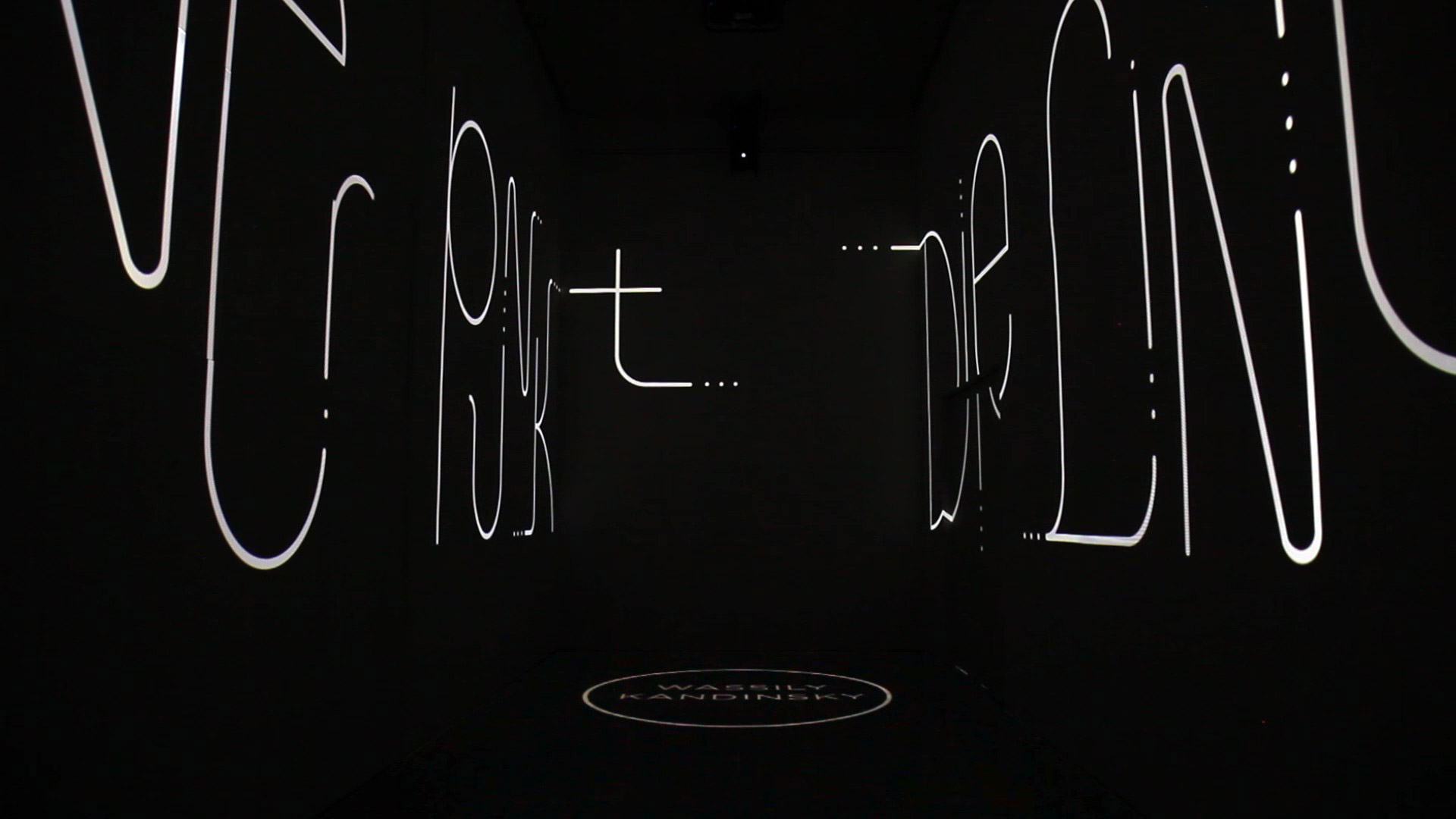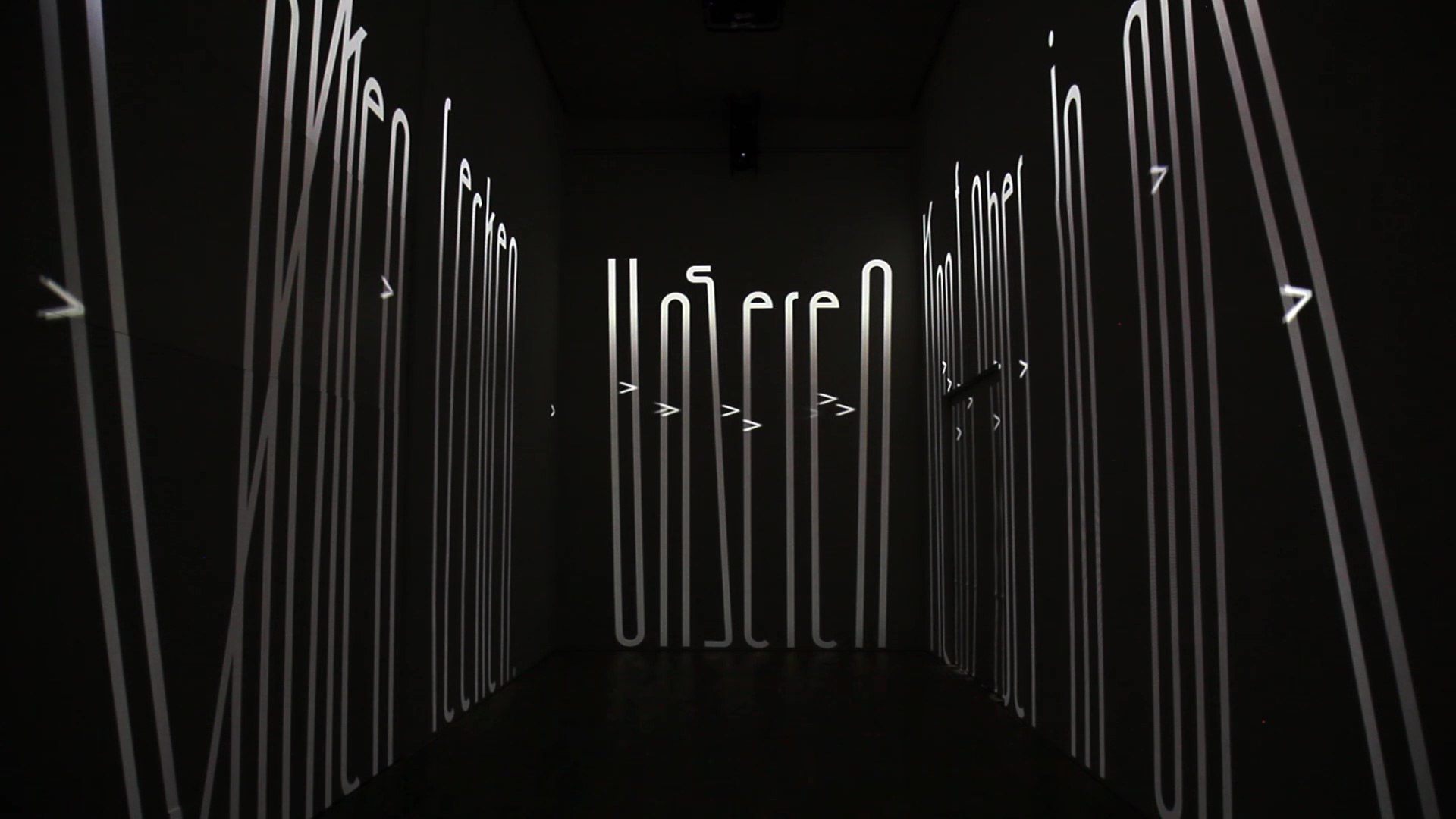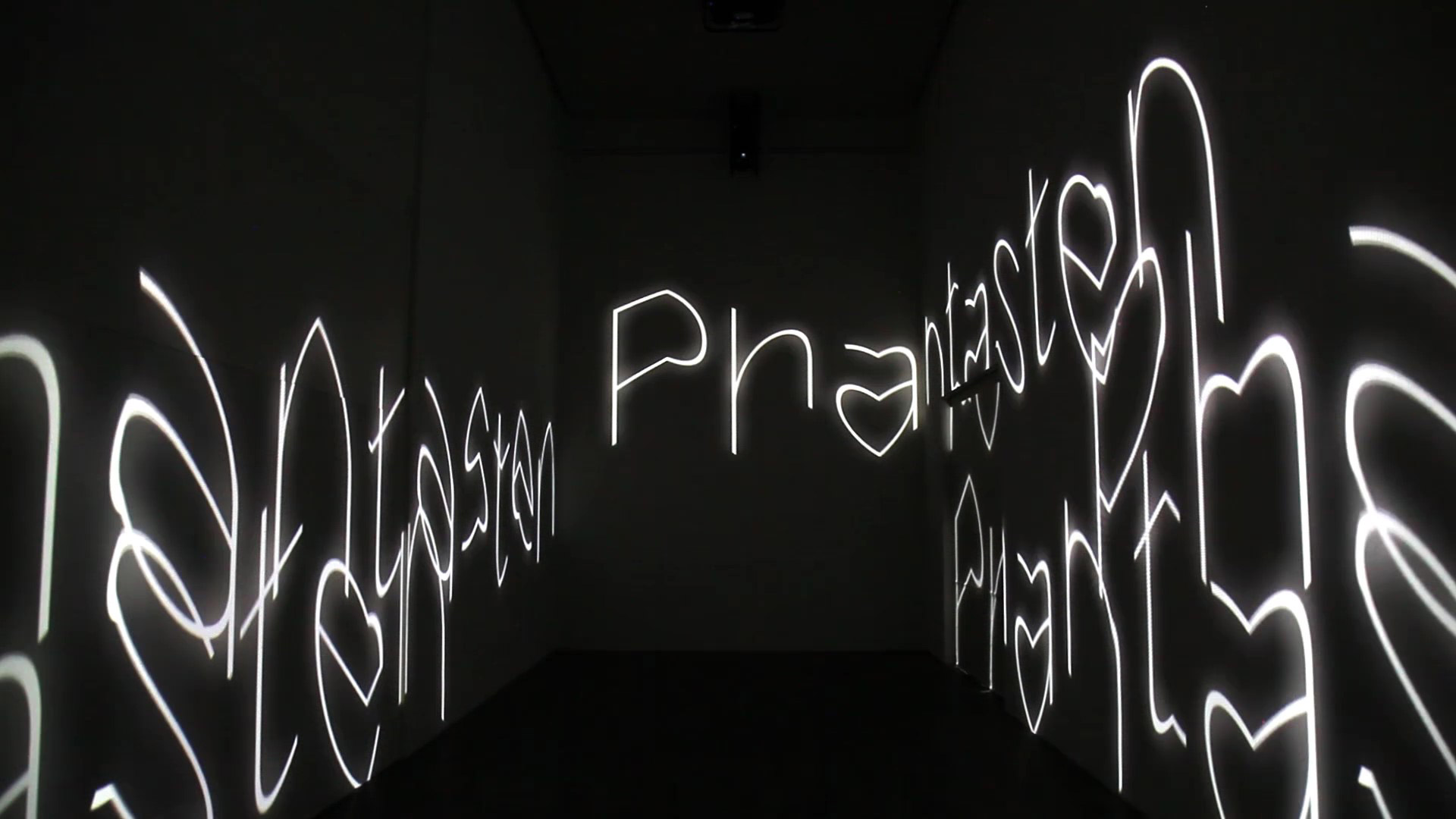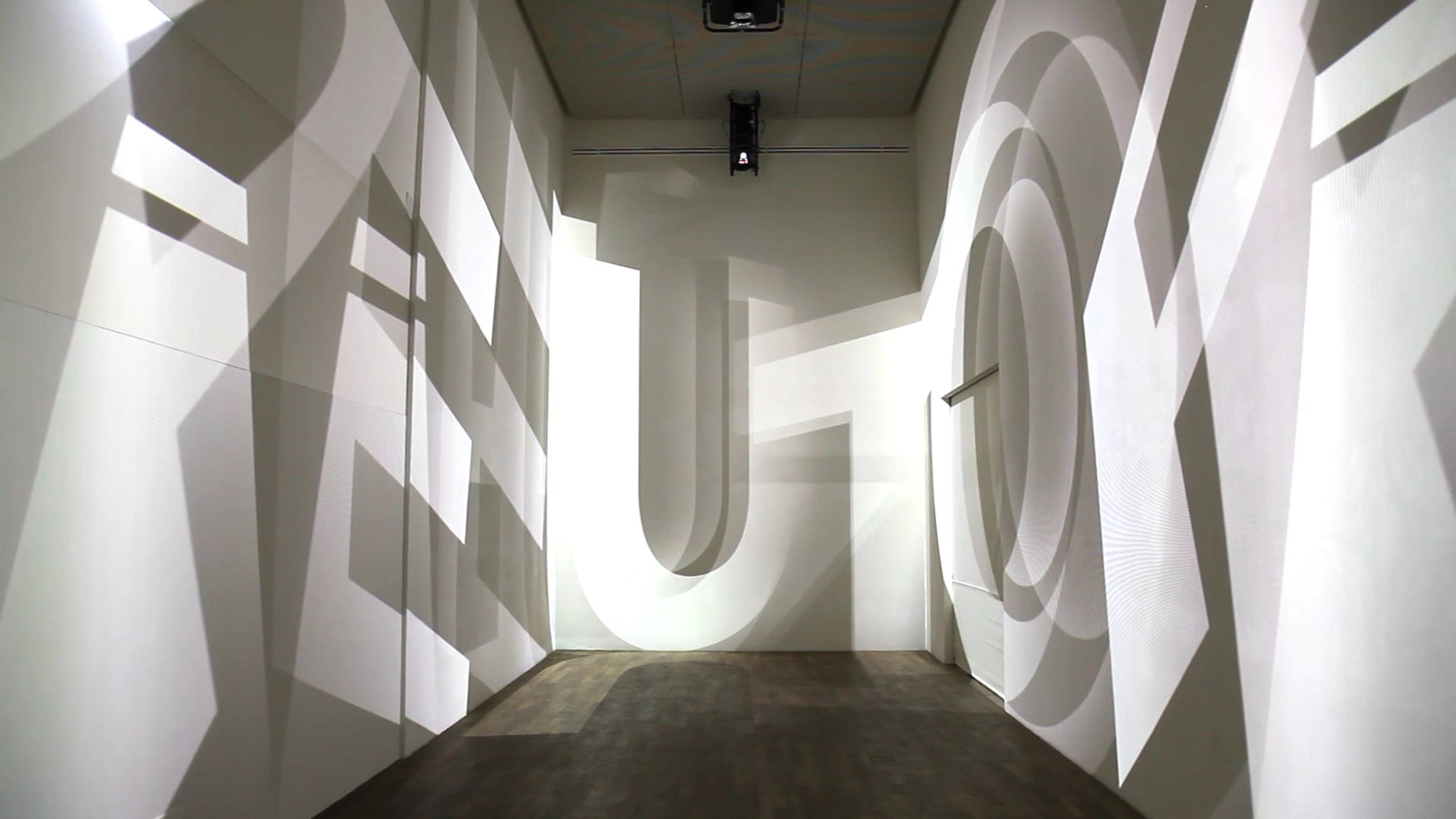TYPO
UTOPIA
A homage to the ideas of the bauhaus artists and the typography of the bauhaus in a 360° installation.
TYPO UTOPIA is a large-scale art installation on the occasion of the 100th anniversary of the Bauhaus, that shows the fascinating effect of typography, movement and sound on human perception. This extraordinary work of art was created by the graphic artists Claudia Dölling and Anja Krämer and reflects ideas of Bauhaus artists as well as the typography of the Bauhaus itself. TYPO UTOPIA was initiated and funded by the Arts Foundation Saxony-Anhalt. In 2020 the installation was awarded gold at the European Design Awards in the Digital Installation category and also received a Red Dot: Best of the Best in the Spatial Communication category.
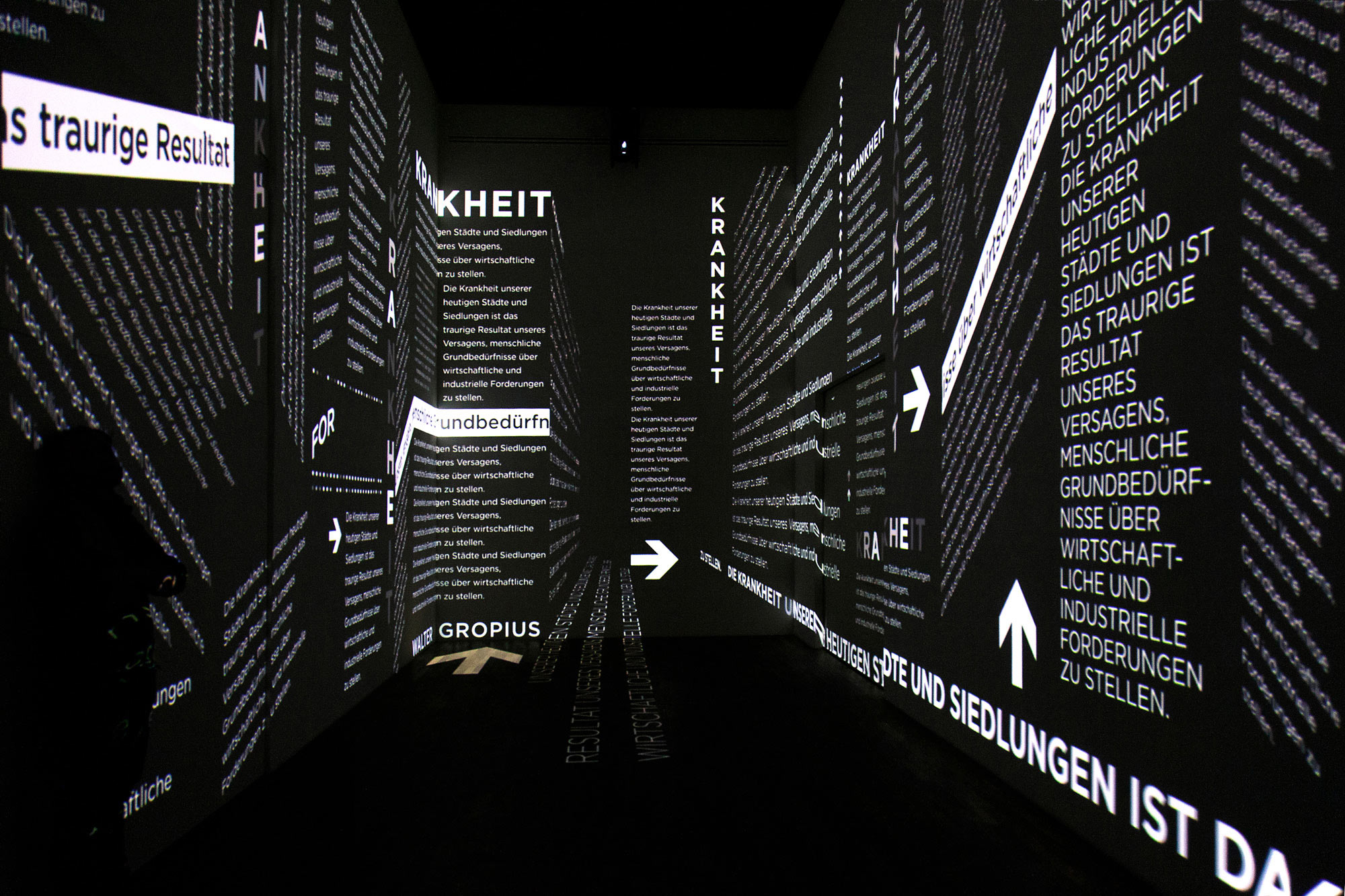
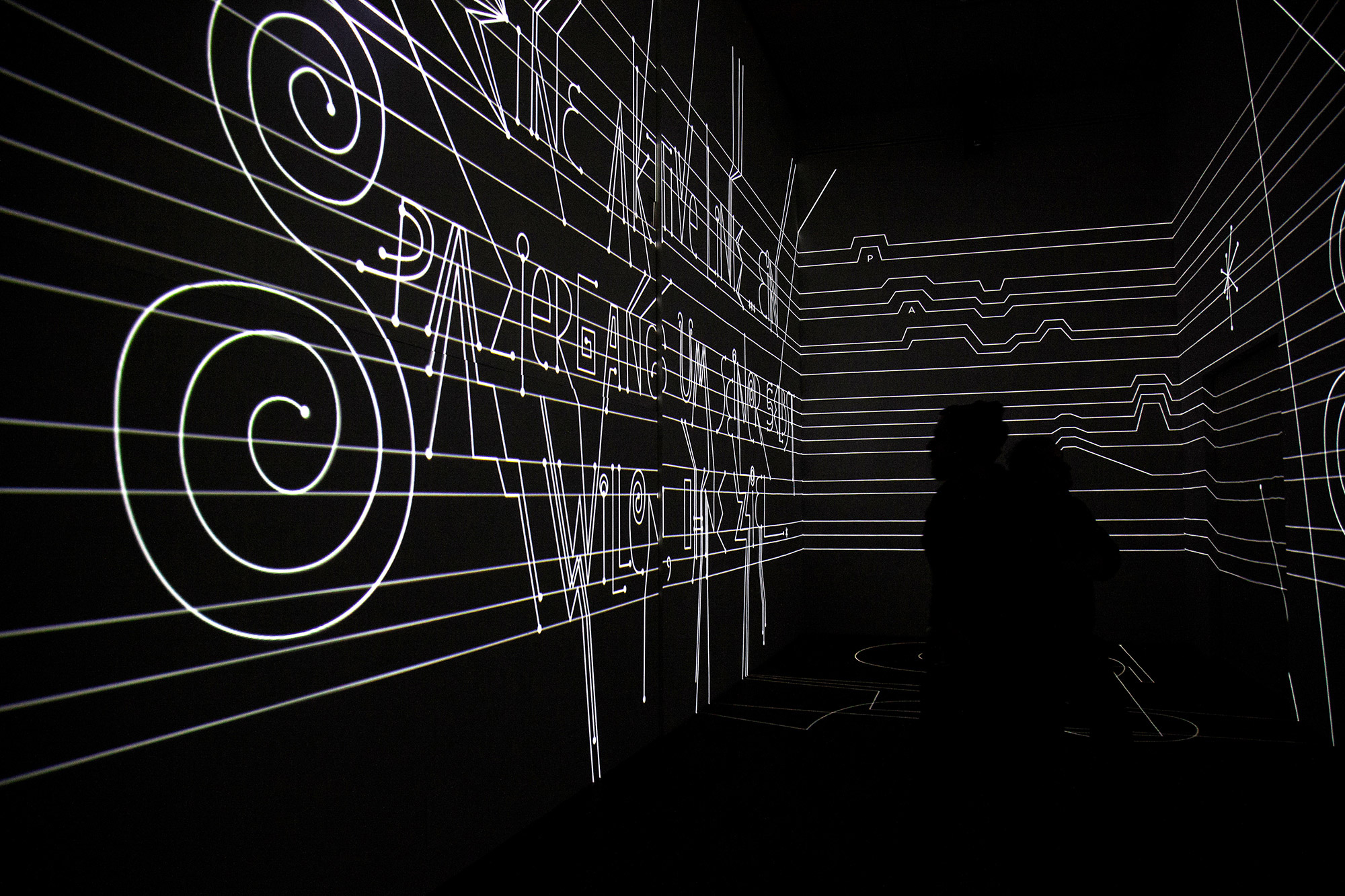
In a pitch-black room, TYPO UTOPIA uses audio-visual means to transport visitors into the world of ideas of the Bauhaus. The interplay of typographic animations, which congenially visualize the content of ten diverse quotations, and a multi-dimensional, spatial soundtrack creates a unique, emotional experience.
The ten selected quotations by Bauhaus artists deal with topics that are still relevant today, such as: the beauty of form, visions of a new way of life, friendship, exchange of opinions, communication, design theory, but also curiosity and the essence of good design. They all form the basis for the typographic experiment. The thematic diversity of the Bauhaus universe is reflected in the typographic design and its animations. Fonts and symbols – sometimes hand-drawn, sometimes constructed, sometimes implemented with existing fonts – play with spatial illusions, float, dance, form a carpet of letters, grow or dissolve. Without any visual material, emotional images are created from black and white, light, shadow and sound alone. Feelings of astonishment, awe, cheerfulness, overstrain, surprise, curiosity, happiness and joy, are generated in the individual quotations and create a collective, but at the same time individual, emotional experience.
Typography influences our perception of information and thus also our emotions. Considering this, TYPO UTOPIA explores the possibilities of moving typography. Based on a big enthusiasm for the power, beauty and meaning of letters, this installation gives the letterforms a stage and offers a surprisingly new approach to the Bauhaus.

Details
A 360° projection on the occasion of the 100th anniversary of the Bauhaus with quotations from Josef Albers, Marguerite Friedlaender, Walter Gropius, Wassily Kandinsky, Paul Klee, László Moholy-Nagy, Gunta Stölzl and Ludwig Mies van der Rohe.
Josef Albers
»The best thing about the Bauhaus was that we were completely independent of each other and agreed on nothing. If Wassily Kandinsky said yes, I said no. If he said no, I said yes. We were best friends because together we wanted to confront the students with different perspectives.«
Josef Albers in an interview in the film Josef and Anni Albers: Art is Everywhere by Sedat Pakay, USA 2006 (transcription and translation by Philipp Oswalt).
László Moholy-Nagy
»Typography is an instrument of communication. It must be a clear message in the most forceful form. ... The nature and purpose of a print determine the unrestrained use of all line directions (...), all types, font sizes, geometric shapes, colours, etc.«
László Moholy-Nagy: Die Neue Typografie (Bauhausbuch 1923) found in: Gerd Fleischmann (Hrsg.): Bauhaus. Drucksachen, Typografie, Reklame, Oktagon Stuttgart, 1995, p. 15.
Wassily Kandinsky
»The line is a bumped point.«
Eckhard Naumann (Hrsg.), Bauhaus und Bauhäusler, DuMont Buchverlag Köln, 1985, p. 325.
Gunta Stölzl
»We wanted to create living things for our present existence, for a new way of life – a huge field of experimentation lay ahead of us. We had to specify our world of imagination, to shape our experiences through material, rhythm, propertion, colour, form.«
Gunta Stölzl looks back on the Weimar Bauhaus period in »Bauhaus. Zeitschrift für Gestaltung«, 2. Juli 1931 found in: Bauhaus-Frauen, Meisterinnen in Kunst, Handwerk und Design, Ulrike Müller, Elisabeth Sandmann Verlag GmbH, München, 2009, p. 42.
Paul Klee
»An active line that walks freely, a walk for its own sake, without goal.«
bauhausbuch 02, paul klee: pädagogisches skizzenbuch, 1925, p. 6.
Wassily Kandinsky
»All these constructive forms have a simple inner sound, which every melody has.«
Kandinsky, Wassily »Über das Geistige in der Kunst: insbesondere in der Malerei«; mit acht Tafeln und zehn Originalholzschnitten – München, 1912, p. 122 (140).
Marguerite Friedlaender
»Publicity and spotlight are as fleeting as clouds, but a good vessel will last for centuries because it is essential, healthy and pure in its practicality, its true beauty, and especially because it is the indivisible, imperishable and complete expression of a human being.«
Wildenhain, Marguerite (1989): Ein Leben für die Keramik. Die Handwerkskunst der großen Keramikerin des Bauhauses. (=The invisible Core) Berlin. Verlag Neue Keramik. ISBN 978-3980221702, p. 223.
Walter Gropius
»The disease of our cities and settlements today is the sad result of our failure to put basic human needs before economic and industrial demands.«
Totale Architektur. In: Walter Gropius: Architektur – Wege zu einer optischen Kultur. Fischer Bücherei Frankfurt/Main 1956. p. 129 f.
Ludwig Mies van der Rohe
»Let us stand with both feet firmly upon the ground, but let us stretch our heads into the clouds.«
Ludwig Mies van der Rohe, Vortrag 1924, in: Fritz Neumeyer: »Das kunstlose Wort. Mies van der Rohe, Gedanken zur Baukunst«, Berlin 1986, p. 309.
Walter Gropius
»Dreamers, fantasts, visionaries ... that‘s what we want in the end: utopia!«
P. 25 in the exhibition catalogue of the Berlinische Galerie (Hg.) Visionäre der Moderne. Paul Scheerbart, Bruno Taut, Paul Goesch, Scheidegger & Spiess, 2016, ISBN 978-3858815101. Manfred Schlösser, Der Utopie eine Chance, in: Ausst.-Kat. Arbeitsrat für Kunst 1918–1921, Akademie der Künste Berlin 1980, S. 81 f., hier p. 82.
Initiator and client:
Arts Foundation Saxony-Anhalt
Artistic concept and realisation:
Claudia Dölling and Anja Krämer
Multi-channel sound:
Alexander Nickmann
Technical production:
Oscar Loeser and Clemens Kowalski (avk4)
Exhibition venue:
Arts Foundation Saxony-Anhalt,
Neuwerk 11, 06108 Halle (Saale)
Germany
Duration of exhibition:
16.11. to 22.12.2019
Room dimensions:
16m length, 4m width and 6m height
360°
INSTALLATION
7
PROJECTORS
264 m²
AREA
6
SOUND CHANNELS
Typo Utopia is a work commissioned by the Arts Foundation Saxony-Anhalt as part of the 100th anniversary of the founding of the Bauhaus with the kind support of the State of Saxony-Anhalt.






